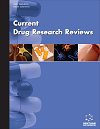
Full text loading...

K+ channels play a key role in the development of the vasodilation response, which is compromised in diabetes.
In this study, the effects of the potassium channel activator cromakalim on aortic function were investigated in streptozotocin (STZ)-diabetic rats at short (1 week), medium (8 weeks), and long-term (14 weeks) durations, including a group treated with insulin for 14 weeks.
Compared with the control group, cromakalim-induced concentration-dependent vasodilation was reduced in the aortas of 8 and 14-week streptozotocin-diabetic rats (p < 0.05). Daily insulin treatment during the long-term (14 weeks) durations normalized the vasodilation response to cromakalim in the aortas of 14-week streptozotocin-diabetic rats.
Studies with cromakalim on diabetic rat aortic K+ channels are limited. Dose-dependent cromakalim-induced vasodilation was investigated in 8- and 12-week STZ-diabetic rat aortas and was found to be reduced. The impaired vasodilation responses were improved in the STZ-diabetic group with chronic insulin treatment. The results of these studies were similar to those of our study.
These findings indicate that potassium channel activity and vascular vasodilation ability decrease in the aortas of streptozotocin-diabetic rats depending on the duration of diabetes. In contrast, potassium channel activity and vascular vasodilation ability return to normal with insulin treatment in 14-week streptozotocin-diabetic aortas.